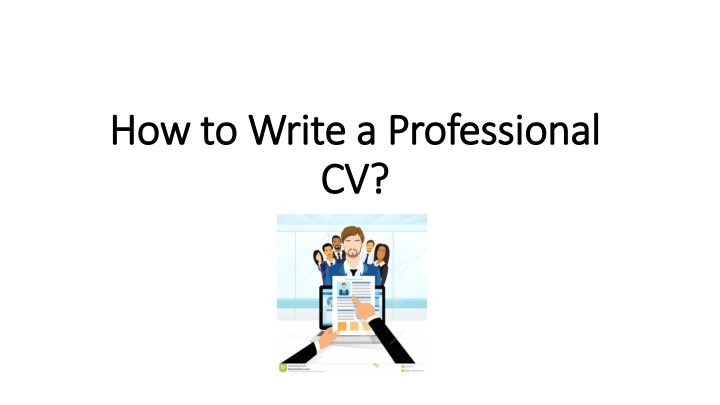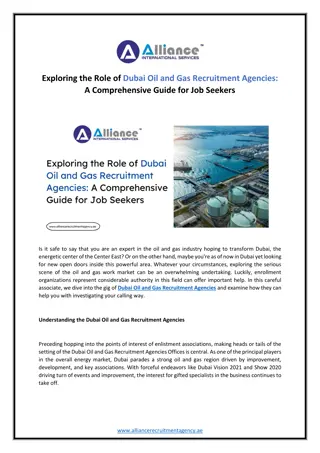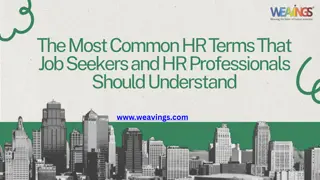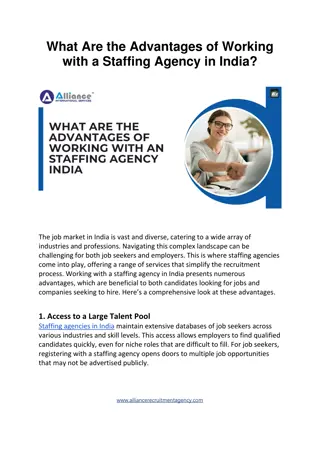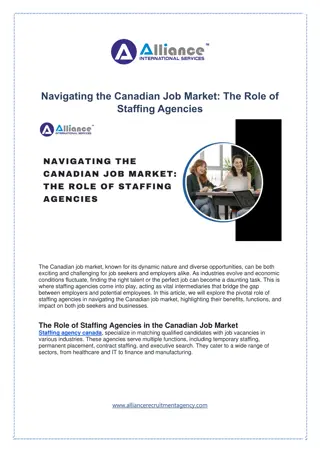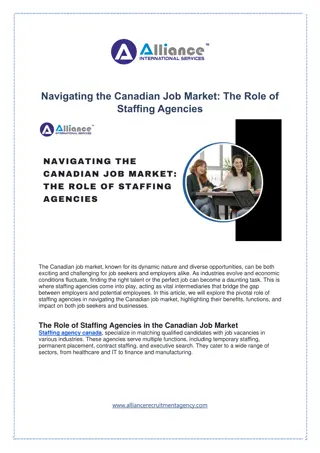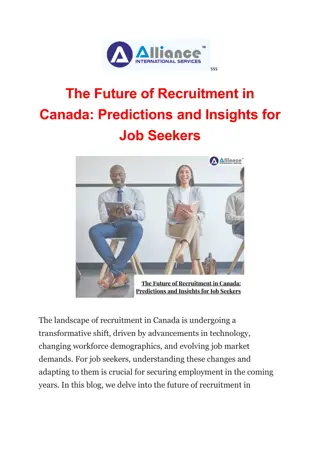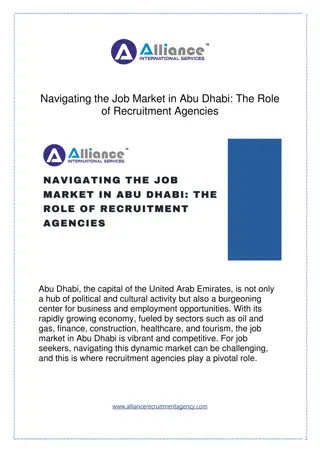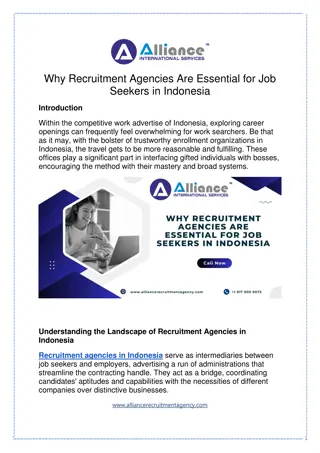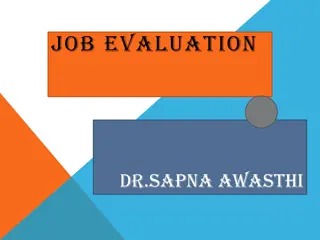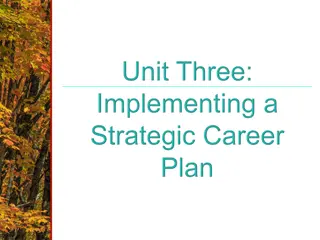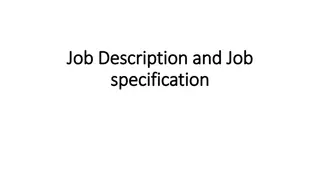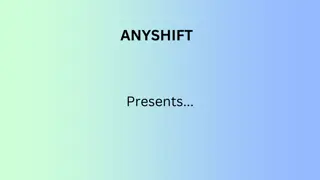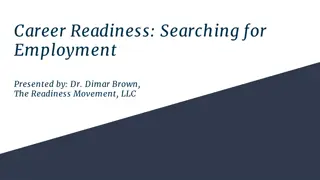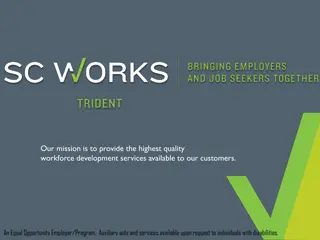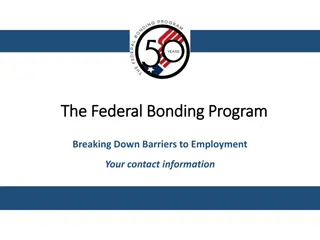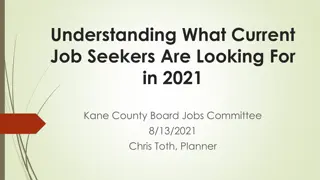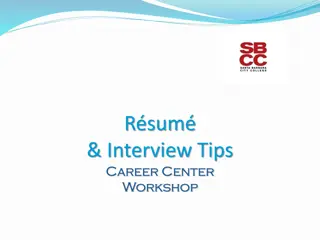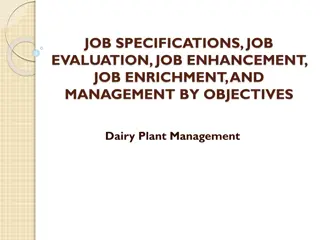How to Write a Professional CV: Essential Guidelines for Job Seekers
Crafting a professional CV is crucial for presenting your qualifications effectively to potential employers. Understand the key differences between a CV and a resume, structure your CV's main contents, and learn the essential components to include to stand out in the job market. This comprehensive guide provides insights on creating a compelling CV that showcases your skills, experiences, and accomplishments in a professional manner.
Download Presentation

Please find below an Image/Link to download the presentation.
The content on the website is provided AS IS for your information and personal use only. It may not be sold, licensed, or shared on other websites without obtaining consent from the author.If you encounter any issues during the download, it is possible that the publisher has removed the file from their server.
You are allowed to download the files provided on this website for personal or commercial use, subject to the condition that they are used lawfully. All files are the property of their respective owners.
The content on the website is provided AS IS for your information and personal use only. It may not be sold, licensed, or shared on other websites without obtaining consent from the author.
E N D
Presentation Transcript
How to Write a Professional How to Write a Professional CV? CV?
What is a CV? What is a CV? CV: Stands for Curriculum Vitae A CV is a personal marketing document used to sell yourself to prospective employers. It should tell them about you, your professional history and your skills, abilities and achievements. The main objective of a CV: is to highlight why you are the best person for the job. A CV is required when applying for a job. Some employers, may ask for a cover letter which will be discussed in a coming chapter.
What is the difference between a CV and a What is the difference between a CV and a Resume? Resume? It is a common mistake that we use both terms CV and Resume to describe the same document. Actually, each term represents a different document, with different specifications.
CV vs. Resume CV vs. Resume Criteria CV Resume Details Detailed Brief Educational and professional History for any scope of job applications Educational and professional qualifications for specific job application Contents Order of events (experiences, education, etc) chronological order (oldest to newest) reverse chronological order (newest to oldest) Make sure of what is required in the job application, sometimes, both CV and Resume are requested. This course concentrates on CVs, which is the most required for fresh graduates
Main Contents of a CV Main Contents of a CV Usually the structure of a CV is flexible, according to the experiences and activities you need to highlight. For example, if you have voluntary work, you add it, if you don t, just skip this part. Nevertheless, there are certain parts that should be included in any CV.
Main Contents of a CV Main Contents of a CV Title: it is better to use your name as the title of your CV, it will be a waste of valuable space to use the word curriculum vitae or CV as a title. Professional Title: Beneath or next to your name, you can add your profession. Eg. Software Developer, Translator, Industrial Engineer, Teacher etc. Contact Details: your email address, phone number(s), the name of the town or country where you live. You can add your linkedIn profile link for more details.
An Example of a CV Title, Along with Contact An Example of a CV Title, Along with Contact Details Details
Main Contents of a CV Main Contents of a CV Personal Profile (Personal Statement | Career Objective): A short paragraph that gives prospective employers an overview of who you are and what you re all about. This could be the most important content of your CV, so you have to be clear, direct and short. This part is located directly after your name and the contact details.
Main Contents of a CV Main Contents of a CV Personal Profile (Personal Statement | Career Objective): This part can be changed according to the Job you are applying for. Try to answer the following questions when writing your personal profile: Who are you? What can you offer the company? What are your career goals?
Main Contents of a CV Main Contents of a CV Quick Exercise Quick Exercise Write a personal profile for yourself. Assume that you are either: A programmer applying for development position in a computer company. A teacher applying for a kindergarten teacher position in a school. An athlete applying for a personal trainer position in a gym. A researcher applying for a Master or a PHD Program.
Main Contents of a CV Main Contents of a CV Experience and Employment History In this section you outline your previous jobs, internships and work experience. List your experience in reverse chronological order ( ). You start with your current job, or the latest job first.
Main Contents of a CV Main Contents of a CV Experience and Employment History For each position, you should state: Job Title The Employer The dates you worked (from to) Your Job Role in brief. Details of your key responsibilities, skills and achievements in bulleted points.
Main Contents of a CV Main Contents of a CV Suggested Format for the Experience and Employment History the Experience and Employment History Suggested Format for
Main Contents of a CV Main Contents of a CV Education and Qualifications In this section you outline the academic degrees you obtained, training courses and professional certificates. They are also listed in reverse chronological order, as in the experience section.
Main Contents of a CV Main Contents of a CV Education and Qualifications For each degree or certificate, you outline: The name of the institution (University, school, Training center, etc.) The dates you were there (from to) Qualifications and grades you achieved. If you have a degree, you can list a few of the most relevant modules, assignments, or projects (Your graduation project for example).
Main Contents of a CV Main Contents of a CV Suggested Format for the Education and Qualifications Part the Education and Qualifications Part Suggested Format for Academic Degree Professional Certificate
Main Contents of a CV Main Contents of a CV Additional Sections (Optional, and depending on the job you are applying for). Skills Hobbies and Interests Languages Awards Publications IT Skills Professional Development (You can include training courses here instead of in education part) Voluntary Work.
Tips of Writing a Good CV Tips of Writing a Good CV Make it easy to read Make it brief. Short sentences and paragraphs. Clear Headings of the main part of the CV. Good use of Bullet Points. (Use them in skills, hobbies, etc. But not in experience and education).
Tips of Writing a Good CV Tips of Writing a Good CV Use language employers want to hear. If you are writing a CV directed for a certain employer and reflecting to a certain job position, concentrate on the keys that they are searching for. Example1: If you are applying for a programming company (Highlight your skills in programming, mention that you are a self learner, a team player, a leader, .etc.) Example2: If you are applying as a kindergarten teacher (highlight how you love being with kids, how patient you are, etc.).
Tips of Writing a Good CV Tips of Writing a Good CV Presentation is Everything. Think of your CV as an advertising brochure. It should be visually attractive. Not crowded with information Use a good font type and size Use bullet points where they should be Never print your CV double-sided.
Tips of Writing a Good CV Tips of Writing a Good CV Be concise yet informative The standard length for a CV is two pages (on separate sheets). If you write more than that, for most jobs, it is unlikely to be read. If you have a long experience, it might be longer that two pages, but you have to make it more attractive to be read. (An outstanding personal profile, may attract the employer to read. Or list your experiences, then add the details at the end.). Every word you use has to count, has to have a purpose.
Tips of Writing a Good CV Tips of Writing a Good CV Review and Edit your CV. Employers automatically reject a CV containing spelling and grammar mistakes. Use the spellcheckers (in MS Word for example), as a start. But don t count totally on it. For example: a spellchecker will accept the term There responsibilities are instead of Their responsibilities are . Ask for a more professional personal review of your CV.
Tips of Writing a Good CV Tips of Writing a Good CV Know what to include and what to exclude. As mentioned before, there are some optional parts that you may include in your CV. But, suppose you are a good swimmer, this is not an important information to apply as a programmer, but it is important if you are applying for a personal trainer in a gym. So, mention the parts that count.
Things to Avoid When Writing a CV Things to Avoid When Writing a CV Avoid mentioning the following information: Age and Date of Birth Marital Status and Dependents. Your Photo Personal Circumstances In many countries, if employers take the previous points in their considerations when hiring, it is considered a form of racism and prejudice. Since an employer should take a decision according to your skills and experiences, not because you are single, of young. These points shouldn t affect how you do your work.
Things to Avoid When Writing a CV Things to Avoid When Writing a CV Avoid mentioning the following information: Your full address (town and country are enough). Curriculum Vitae as a Title. Irrelevant Work Experience and Qualifications. References. Your former employers are your expected references. No need for the statement References available upon request If the new employer needs references, they will ask for them.
Any Questions? Any Questions?
References References https://www.thebalancecareers.com/resume-types-chronological- functional-combination-2063235 https://novoresume.com/career-blog/cv-vs-resume-what-is-the- difference https://en.oxforddictionaries.com/writing-help/top-tips-for-cv- writing https://jobs.telegraph.co.uk/careers/cv-writing-advice/ https://www.cv-library.co.uk/career-advice/cv/how-to-write-a-cv- tips-for-2018/
